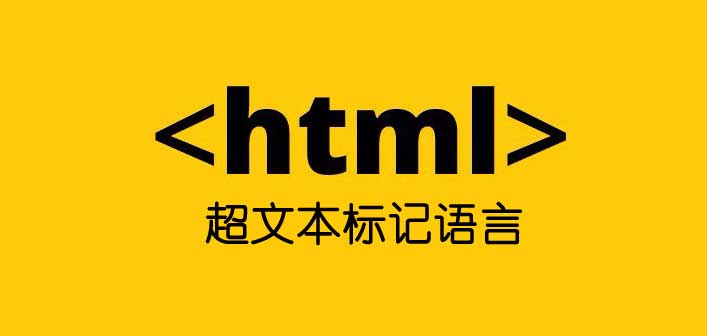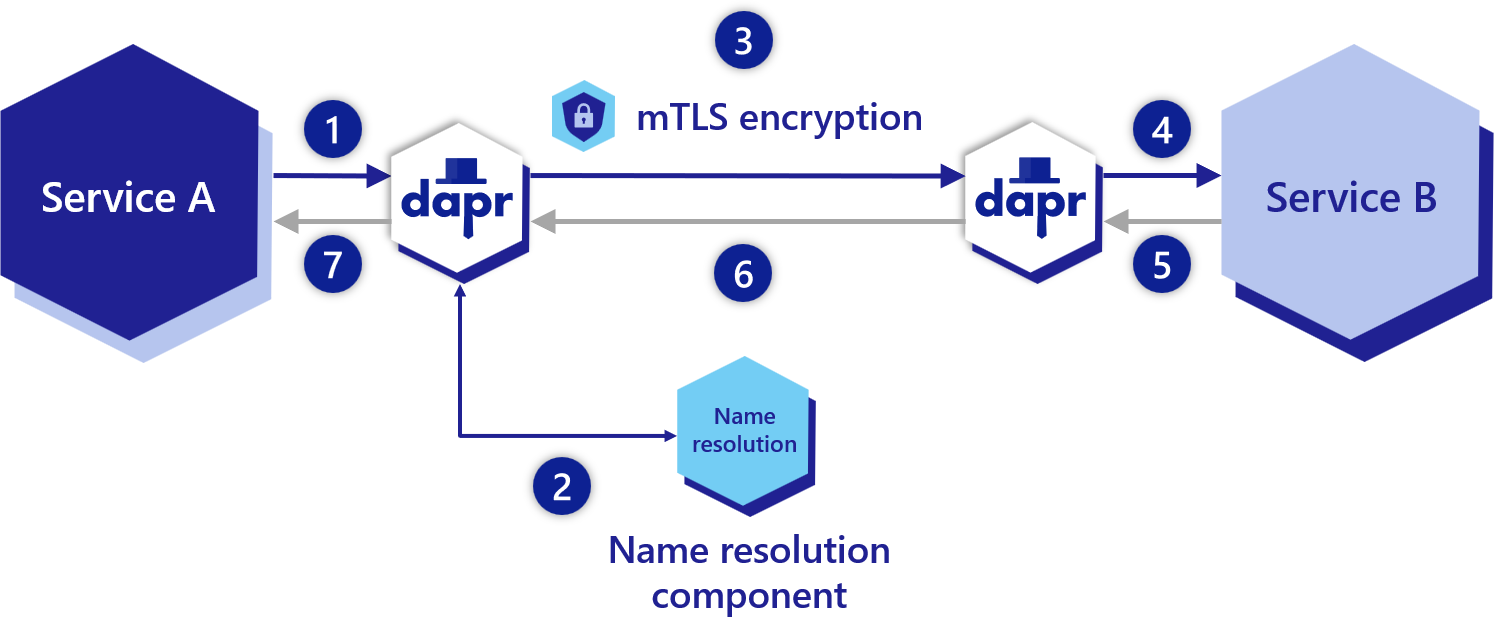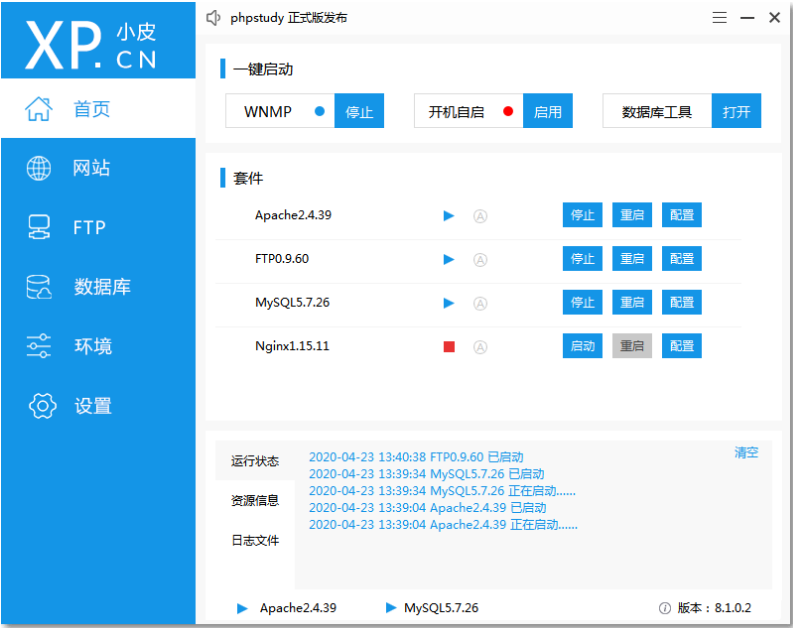重新整理 .net core 实践篇——— 权限源码阅读四十五]
前言
简单介绍一下权限源码阅读一下。
正文
一直有人对授权这个事情上争论不休,有的人认为在输入账户密码给后台这个时候进行了授权,因为认为发送了一个身份令牌,令牌里面可能有些用户角色信息,认为这就是授权,有的人认为这只是获取令牌的过程。
现实生活中有一个是授权证书,那么有人认为token 是授权证书,但这只是颁发证书。账户密码获取获取身份令牌也不是认证,认证是证明你的身份令牌有效的过程。
那么netcore 中是如何解释授权的:

授权是指确定用户可执行的操作的过程。故而实际上,获取身份令牌只是获取令牌,授权是指在访问过程中,确认是否可以访问的过程。身份令牌中有角色,有些是根据角色还确定是否可以访问的,这就是授权了。
不过随着业务的复杂,网关可以根据角色授权接口,也可以根据自己的策略了,授权的过程五花八门的。
在网关中一般有认证和授权两部分,先认证再授权,先确定合法身份在来确定一下授权。
先来看下认证吧,有些人一认证就想到了jwt,或者想到了具体的认证方式,其实认证就是你的系统认为它符合了合法身份,和具体的东西没有关系,是一个抽象的概念。
域名uthentication();
通过上面这个看下认证过程。
然后看下具体的中间件。
public AuthenticationMiddleware(RequestDelegate next, IAuthenticationSchemeProvider schemes)
{
if (next == null)
{
throw new ArgumentNullException(nameof(next));
}
if (schemes == null)
{
throw new ArgumentNullException(nameof(schemes));
}
_next = next;
Schemes = schemes;
}
从这里看呢,IAuthenticationSchemeProvider 提供了认证解决方案,可以看下这个接口。
/// <summary>
/// Responsible for managing what authenticationSchemes are supported.
/// </summary>
public interface IAuthenticationSchemeProvider
{
/// <summary>
/// Returns all currently registered <see cref="AuthenticationScheme"/>s.
/// </summary>
/// <returns>All currently registered <see cref="AuthenticationScheme"/>s.</returns>
Task<IEnumerable<AuthenticationScheme>> GetAllSchemesAsync();
/// <summary>
/// Returns the <see cref="AuthenticationScheme"/> matching the name, or null.
/// </summary>
/// <param name="name">The name of the authenticationScheme.</param>
/// <returns>The scheme or null if not found.</returns>
Task<AuthenticationScheme?> GetSchemeAsync(string name);
/// <summary>
/// Returns the scheme that will be used by default for <see cref="域名enticateAsync(HttpContext, string)"/>.
/// This is typically specified via <see cref="域名ultAuthenticateScheme"/>.
/// Otherwise, this will fallback to <see cref="域名ultScheme"/>.
/// </summary>
/// <returns>The scheme that will be used by default for <see cref="域名enticateAsync(HttpContext, string)"/>.</returns>
Task<AuthenticationScheme?> GetDefaultAuthenticateSchemeAsync();
/// <summary>
/// Returns the scheme that will be used by default for <see cref="域名lengeAsync(HttpContext, string, AuthenticationProperties)"/>.
/// This is typically specified via <see cref="域名ultChallengeScheme"/>.
/// Otherwise, this will fallback to <see cref="域名ultScheme"/>.
/// </summary>
/// <returns>The scheme that will be used by default for <see cref="域名lengeAsync(HttpContext, string, AuthenticationProperties)"/>.</returns>
Task<AuthenticationScheme?> GetDefaultChallengeSchemeAsync();
/// <summary>
/// Returns the scheme that will be used by default for <see cref="域名idAsync(HttpContext, string, AuthenticationProperties)"/>.
/// This is typically specified via <see cref="域名ultForbidScheme"/>.
/// Otherwise, this will fallback to <see cref="GetDefaultChallengeSchemeAsync"/> .
/// </summary>
/// <returns>The scheme that will be used by default for <see cref="域名idAsync(HttpContext, string, AuthenticationProperties)"/>.</returns>
Task<AuthenticationScheme?> GetDefaultForbidSchemeAsync();
/// <summary>
/// Returns the scheme that will be used by default for <see cref="域名InAsync(HttpContext, string, 域名域名msPrincipal, AuthenticationProperties)"/>.
/// This is typically specified via <see cref="域名ultSignInScheme"/>.
/// Otherwise, this will fallback to <see cref="域名ultScheme"/>.
/// </summary>
/// <returns>The scheme that will be used by default for <see cref="域名InAsync(HttpContext, string, 域名域名msPrincipal, AuthenticationProperties)"/>.</returns>
Task<AuthenticationScheme?> GetDefaultSignInSchemeAsync();
/// <summary>
/// Returns the scheme that will be used by default for <see cref="域名OutAsync(HttpContext, string, AuthenticationProperties)"/>.
/// This is typically specified via <see cref="域名ultSignOutScheme"/>.
/// Otherwise, this will fallback to <see cref="GetDefaultSignInSchemeAsync"/> .
/// </summary>
/// <returns>The scheme that will be used by default for <see cref="域名OutAsync(HttpContext, string, AuthenticationProperties)"/>.</returns>
Task<AuthenticationScheme?> GetDefaultSignOutSchemeAsync();
/// <summary>
/// Registers a scheme for use by <see cref="IAuthenticationService"/>.
/// </summary>
/// <param name="scheme">The scheme.</param>
void AddScheme(AuthenticationScheme scheme);
/// <summary>
/// Registers a scheme for use by <see cref="IAuthenticationService"/>.
/// </summary>
/// <param name="scheme">The scheme.</param>
/// <returns>true if the scheme was added successfully.</returns>
bool TryAddScheme(AuthenticationScheme scheme)
{
try
{
AddScheme(scheme);
return true;
}
catch {
return false;
}
}
/// <summary>
/// Removes a scheme, preventing it from being used by <see cref="IAuthenticationService"/>.
/// </summary>
/// <param name="name">The name of the authenticationScheme being removed.</param>
void RemoveScheme(string name);
/// <summary>
/// Returns the schemes in priority order for request handling.
/// </summary>
/// <returns>The schemes in priority order for request handling</returns>
Task<IEnumerable<AuthenticationScheme>> GetRequestHandlerSchemesAsync();
}
虽然没有看到具体的provider,但是呢,可以通过接口注释看个大概哈。
比如说AuthenticationScheme 是认证方案的意思,从英文表面理解哈。然后里面有方法增删改查,意味着我们可以有多种认证方式。
这其实是刚需,因为比如以前颁发的身份令牌和现在接口颁发的身份令牌不一样了,那么为了无缝衔接,可以认可两种认证方式。
那么看下AuthenticationScheme 认证方案里面有些啥吧。
/// <summary>
/// AuthenticationSchemes assign a name to a specific <see cref="IAuthenticationHandler"/>
/// handlerType.
/// </summary>
public class AuthenticationScheme
{
/// <summary>
/// Initializes a new instance of <see cref="AuthenticationScheme"/>.
/// </summary>
/// <param name="name">The name for the authentication scheme.</param>
/// <param name="displayName">The display name for the authentication scheme.</param>
/// <param name="handlerType">The <see cref="IAuthenticationHandler"/> type that handles this scheme.</param>
public AuthenticationScheme(string name, string? displayName, [DynamicallyAccessedMembers(域名icConstructors)] Type handlerType)
{
if (name == null)
{
throw new ArgumentNullException(nameof(name));
}
if (handlerType == null)
{
throw new ArgumentNullException(nameof(handlerType));
}
if (!typeof(IAuthenticationHandler).IsAssignableFrom(handlerType))
{
throw new ArgumentException("handlerType must implement IAuthenticationHandler.");
}
Name = name;
HandlerType = handlerType;
DisplayName = displayName;
}
/// <summary>
/// The name of the authentication scheme.
/// </summary>
public string Name { get; }
/// <summary>
/// The display name for the scheme. Null is valid and used for non user facing schemes.
/// </summary>
public string? DisplayName { get; }
/// <summary>
/// The <see cref="IAuthenticationHandler"/> type that handles this scheme.
/// </summary>
[DynamicallyAccessedMembers(域名icConstructors)]
public Type HandlerType { get; }
}
这里面有name 和displayname,一个是名称,一个是显示名称,相信很多人都见到过这样的类,里面有name 还有 displayname。
不要那么计较,显示名称是为了好大家好而已。比如说我们的sex 表示性别,那么displayname 可以写显示名称。
比如说你的一个计划类,里面可以有name 和 displayname。name 是JC159,displayname 是瞎扯计划,JC159 多难理解啊,瞎扯计划多好理解,瞎扯啊。
然后里面有一个是HandlerType,叫做处理类型,处理认证计划的类型。上面有注释,这个类型继承IAuthenticationHandler这个接口,那么也就是这个方案将由实现IAuthenticationHandler的类来处理,具体看实际的处理方案,比如jwt。
然后看下中间件的invoke。
/// <summary>
/// Invokes the middleware performing authentication.
/// </summary>
/// <param name="context">The <see cref="HttpContext"/>.</param>
public async Task Invoke(HttpContext context)
{
域名<IAuthenticationFeature>(new AuthenticationFeature
{
OriginalPath = 域名,
OriginalPathBase = 域名Base
});
// Give any IAuthenticationRequestHandler schemes a chance to handle the request
var handlers = 域名equiredService<IAuthenticationHandlerProvider>();
foreach (var scheme in await 域名equestHandlerSchemesAsync())
{
var handler = await 域名andlerAsync(context, 域名) as IAuthenticationRequestHandler;
if (handler != null && await 域名leRequestAsync())
{
return;
}
}
var defaultAuthenticate = await 域名efaultAuthenticateSchemeAsync();
if (defaultAuthenticate != null)
{
var result = await 域名enticateAsync(域名);
if (result?.Principal != null)
{
域名 = 域名cipal;
}
}
await _next(context);
}
一段一段看吧。
域名<IAuthenticationFeature>(new AuthenticationFeature
{
OriginalPath = 域名,
OriginalPathBase = 域名Base
});
Features 是经过一个集合,比如我们经过中间件,我们可以向里面写入一些东西,然后供下一个中间件使用都行,有点像是游戏里面背包的功能。
var handlers = 域名equiredService<IAuthenticationHandlerProvider>();
foreach (var scheme in await 域名equestHandlerSchemesAsync())
{
var handler = await 域名andlerAsync(context, 域名) as IAuthenticationRequestHandler;
if (handler != null && await 域名leRequestAsync())
{
return;
}
}
这里面就是获取就是获取相应的认真方案处理器,然后进行执行HandleRequestAsync。
值得主意的是,这里面并不是执行IAuthenticationHandler的方法,而是IAuthenticationRequestHandler的方法。
所以这并不意味这我们的写入的每个方案都必须通过,而是如果我们的写入的每个认证方案继承IAuthenticationRequestHandler,那么必须通过其中的HandleRequestAsync方法。
然后看下IAuthenticationRequestHandler 这个哈。
/// <summary>
/// Used to determine if a handler wants to participate in request processing.
/// </summary>
public interface IAuthenticationRequestHandler : IAuthenticationHandler
{
/// <summary>
/// Gets a value that determines if the request should stop being processed.
/// <para>
/// This feature is supported by the Authentication middleware
/// which does not invoke any subsequent <see cref="IAuthenticationHandler"/> or middleware configured in the request pipeline
/// if the handler returns <see langword="true" />.
/// </para>
/// </summary>
/// <returns><see langword="true" /> if request processing should stop.</returns>
Task<bool> HandleRequestAsync();
}
继续往下看:
var defaultAuthenticate = await 域名efaultAuthenticateSchemeAsync();
if (defaultAuthenticate != null)
{
var result = await 域名enticateAsync(域名);
if (result?.Principal != null)
{
域名 = 域名cipal;
}
}
继续往下看哈,然后里面也有这个哈,如果有默认的认证方案,那么域名 会通过默认认证方案的处理器进行获取。也就是说如果我们设置了默认方案,那么就会通过默认方案来进行认证。
await _next(context);
这个表示继续往下执行了。
那么来看下具体服务的认证吧,比如说jwt的。
域名uthentication("Bearer")
// 添加JwtBearer服务
.AddJwtBearer(o =>
{
域名nValidationParameters = tokenValidationParameters;
域名ts = new JwtBearerEvents
{
OnAuthenticationFailed = context =>
{
// 如果过期,则把<是否过期>添加到,返回头信息中
if (域名ype() == typeof(SecurityTokenExpiredException))
{
域名域名("Token-Expired", "true");
}
return 域名letedTask;
}
};
});
首先来看一下:
域名uthentication("Bearer")
这里面就是设置默认的认证方案:
public static AuthenticationBuilder AddAuthentication(this IServiceCollection services, string defaultScheme)
=> 域名uthentication(o => 域名ultScheme = defaultScheme);
public static AuthenticationBuilder AddAuthentication(this IServiceCollection services, Action<AuthenticationOptions> configureOptions) {
if (services == null)
{
throw new ArgumentNullException(nameof(services));
}
if (configureOptions == null)
{
throw new ArgumentNullException(nameof(configureOptions));
}
var builder = 域名uthentication();
域名igure(configureOptions);
return builder;
}
看一下:var builder = 域名uthentication();
这个哈,这个才是具体增加具体服务的。
public static AuthenticationBuilder AddAuthentication(this IServiceCollection services)
{
if (services == null)
{
throw new ArgumentNullException(nameof(services));
}
域名uthenticationCore();
域名ataProtection();
域名ebEncoders();
域名ddSingleton<ISystemClock, SystemClock>();
return new AuthenticationBuilder(services);
}
然后看下域名uthenticationCore();,为什么看下这个呢?难道我提前看了这个东西吗?
不是,因为我们知道分层的时候有个Core的层,是具体实现的,那么这种带core 一般就是具体实现方式了。
public static IServiceCollection AddAuthenticationCore(this IServiceCollection services)
{
if (services == null)
{
throw new ArgumentNullException(nameof(services));
}
域名ddScoped<IAuthenticationService, AuthenticationService>();
域名ddSingleton<IClaimsTransformation, NoopClaimsTransformation>(); // Can be replaced with scoped ones that use DbContext
域名ddScoped<IAuthenticationHandlerProvider, AuthenticationHandlerProvider>();
域名ddSingleton<IAuthenticationSchemeProvider, AuthenticationSchemeProvider>();
return services;
}
前面我们看了这个IAuthenticationHandlerProvider 和IAuthenticationSchemeProvider ,那么这里可以看到他们的具体实现是AuthenticationHandlerProvider和AuthenticationSchemeProvider。
前面提及到会通过handletype来获取具体的处理器,那么来看下具体怎么实现的吧。
/// <summary>
/// Returns the handler instance that will be used.
/// </summary>
/// <param name="context">The context.</param>
/// <param name="authenticationScheme">The name of the authentication scheme being handled.</param>
/// <returns>The handler instance.</returns>
public async Task<IAuthenticationHandler> GetHandlerAsync(HttpContext context, string authenticationScheme)
{
if (域名ainsKey(authenticationScheme))
{
return _handlerMap[authenticationScheme];
}
var scheme = await 域名chemeAsync(authenticationScheme);
if (scheme == null)
{
return null;
}
var handler = (域名ervice(域名lerType) ??
域名teInstance(域名estServices, 域名lerType))
as IAuthenticationHandler;
if (handler != null)
{
await 域名ializeAsync(scheme, context);
_handlerMap[authenticationScheme] = handler;
}
return handler;
}
看这个GetHandlerAsync,是通过依赖注入的方式来获取的,根据方案里面的GetHandlerAsync。
那么从这里就能猜到jwt的具体实现了,那么直接来看吧。
域名uthentication("Bearer")
// 添加JwtBearer服务
.AddJwtBearer(o =>
{
域名nValidationParameters = tokenValidationParameters;
域名ts = new JwtBearerEvents
{
OnAuthenticationFailed = context =>
{
// 如果过期,则把<是否过期>添加到,返回头信息中
if (域名ype() == typeof(SecurityTokenExpiredException))
{
域名域名("Token-Expired", "true");
}
return 域名letedTask;
}
};
});
其实不建议这么写的,应该是:

直接标明这里使用的策略,之所以这个能够生效,是因为默认的是

红框框部分是Bearer,但是不友好,对框架不熟,容易形成误导。
继续往下看:
public static AuthenticationBuilder AddJwtBearer(this AuthenticationBuilder builder, string authenticationScheme, string displayName, Action<JwtBearerOptions> configureOptions)
{
域名ddEnumerable(域名leton<IPostConfigureOptions<JwtBearerOptions>, JwtBearerPostConfigureOptions>());
return 域名cheme<JwtBearerOptions, JwtBearerHandler>(authenticationScheme, displayName, configureOptions);
}
AddScheme 就是具体的注入了:
/// <summary>
/// Adds a <see cref="AuthenticationScheme"/> which can be used by <see cref="IAuthenticationService"/>.
/// </summary>
/// <typeparam name="TOptions">The <see cref="AuthenticationSchemeOptions"/> type to configure the handler."/>.</typeparam>
/// <typeparam name="THandler">The <see cref="AuthenticationHandler{TOptions}"/> used to handle this scheme.</typeparam>
/// <param name="authenticationScheme">The name of this scheme.</param>
/// <param name="displayName">The display name of this scheme.</param>
/// <param name="configureOptions">Used to configure the scheme options.</param>
/// <returns>The builder.</returns>
public virtual AuthenticationBuilder AddScheme<TOptions, THandler>(string authenticationScheme, string displayName, Action<TOptions> configureOptions)
where TOptions : AuthenticationSchemeOptions, new()
where THandler : AuthenticationHandler<TOptions>
=> AddSchemeHelper<TOptions, THandler>(authenticationScheme, displayName, configureOptions);
然后加入到认证方案中去,JwtBearerOptions 就是这个方案的配置,JwtBearerHandler就是具体的处理,看下AddSchemeHelper。
private AuthenticationBuilder AddSchemeHelper<TOptions, THandler>(string authenticationScheme, string displayName, Action<TOptions> configureOptions)
where TOptions : class, new()
where THandler : class, IAuthenticationHandler
{
域名igure<AuthenticationOptions>(o =>
{
域名cheme(authenticationScheme, scheme => {
域名lerType = typeof(THandler);
域名layName = displayName;
});
});
if (configureOptions != null)
{
域名igure(authenticationScheme, configureOptions);
}
域名ransient<THandler>();
return this;
}
分步骤看下:
域名igure<AuthenticationOptions>(o =>
{
域名cheme(authenticationScheme, scheme => {
域名lerType = typeof(THandler);
域名layName = displayName;
});
});
这一步就是添加具体的认证方案。
if (configureOptions != null)
{
域名igure(authenticationScheme, configureOptions);
}
域名ransient<THandler>();
这一步就是注入配置文件,并且将处理器注入到ioc中,这里就是JwtBearerHandler了。
JwtBearerHandler 就不看了,就是一些具体的实现,根据配置文件,然后处理,就属于jwt的知识了。
补充
这里扩容一下配置的知识,主要解释一下JwtBearerHandler 是如何根据不同的authenticationScheme 获取不同的配置的。
域名igure(authenticationScheme, configureOptions);
public static IServiceCollection Configure<TOptions>(this IServiceCollection services, string name, Action<TOptions> configureOptions)
where TOptions : class
{
if (services == null)
{
throw new ArgumentNullException(nameof(services));
}
if (configureOptions == null)
{
throw new ArgumentNullException(nameof(configureOptions));
}
域名ptions();
域名ingleton<IConfigureOptions<TOptions>>(new ConfigureNamedOptions<TOptions>(name, configureOptions));
return services;
}
看到吧,实际上获IConfigureOptions
看下JwtBearerHandler:
public class JwtBearerHandler : AuthenticationHandler<JwtBearerOptions>
public JwtBearerHandler(IOptionsMonitor<JwtBearerOptions> options, ILoggerFactory logger, UrlEncoder encoder, IDataProtectionProvider dataProtection, ISystemClock clock)
: base(options, logger, encoder, clock)
{ }
将options 传给了AuthenticationHandler。
那么看下AuthenticationHandler 中如何处理的吧。
初始化的时候:
/// <summary>
/// Initialize the handler, resolve the options and validate them.
/// </summary>
/// <param name="scheme"></param>
/// <param name="context"></param>
/// <returns></returns>
public async Task InitializeAsync(AuthenticationScheme scheme, HttpContext context)
{
if (scheme == null)
{
throw new ArgumentNullException(nameof(scheme));
}
if (context == null)
{
throw new ArgumentNullException(nameof(context));
}
Scheme = scheme;
Context = context;
Options = 域名(域名) ?? new TOptions();
域名date(域名);
await InitializeEventsAsync();
await InitializeHandlerAsync();
}
进行一波筛选而来的哈。
结
下一节看下授权的源码吧。

















